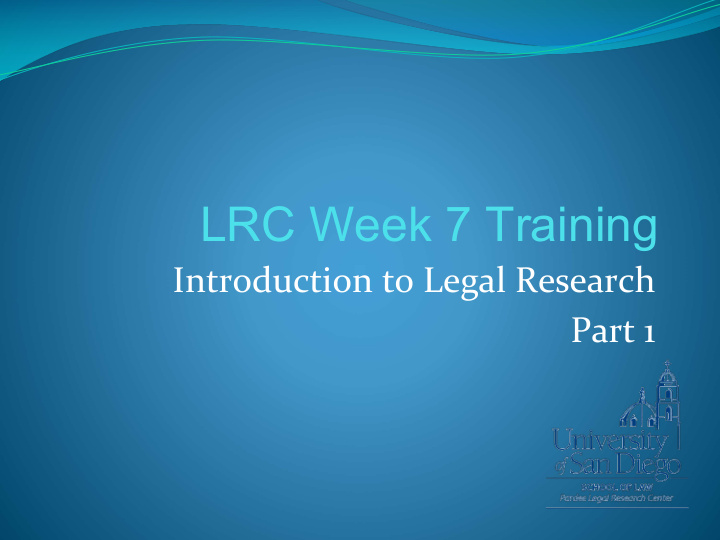



LRC Week 7 Training Introduction to Legal Research Part 1
What we will cover • Differences between primary and secondary sources • Types of secondary sources: • Legal encyclopedias (AmJur, CJS, Cal Jur, and Witkin Summary of California Law) • Treatises and practice guides (Witkin Treatises, Matthew Bender Practice Guides, CEB Practice Guides, Rutter Practice Guides) • American Law Reports • Legal periodicals • Searching for secondary sources: using natural language & filtering by source type. • In-class research problem: Medical marijuana • Secondary source & statutory research
Primary sources (primary authority) • Examples: Caselaw and statutes & codes • Created by the courts and the legislature • It’s the law! • Binding/mandatory vs. nonbinding/persuasive • Jurisdiction • Weight of authority (level of court)
Secondary sources (secondary authority) • Secondary sources are background resources. • Examples: encyclopedias, treatises and practice guides, A.L.R. annotations, journal or law review articles, and restatements of the law. • Secondary sources are NOT binding, but they can be a good way to start research as they contain valuable citations to primary sources. Secondary sources are huge time-savers!
Legal encyclopedias • Report on the general state of the law in different subject areas. • There are two multi-state legal encyclopedias: American Jurisprudence (Am. Jur.) and Corpus Juris Secundum (C.J.S.). • In addition, California has two state encyclopedias: California Jurisprudence (Cal. Jur.) and Witkin’s Summary of California Law .
Treatises and practice guides • Essentially, single-subject legal books. • Treatise examples: Corbin on Contracts, Products Liability in a Nutshell, Witkin California Criminal Law. • Practice guide examples: California Landlord-Tenant Practice, California Civil Practice. • Popular practice guide publishers include Matthew Bender (Lexis), CEB (OnLaw), and Rutter (Westlaw)
American Law Reports (ALR) • Contains articles called “Annotations.” • Annotations collect summaries of cases from a variety of jurisdictions to provide an overview of the law on a topic. • They are more detailed than encyclopedias.
Legal periodicals • Law journals or law reviews • Contain detailed articles on very specific topics, e.g. Last Resorts and Fundamental Rights: The Substantive Due Process Implications of Prohibitions on Medical Marijuana , 118 H ARV . L. R EV . 1985 (2005) • Generally, not a good place to start your legal research if you are just getting familiar with a topic.
Searching for secondary sources In Westlaw and Lexis you have two options for accessing secondary sources: Option 1: Type in the name of the item (e.g. California Jurisprudence, American Law Reports, etc.) , select one of the options in the drop-down menu, and search within that source. Option 2: Search by natural language and filter by clicking on secondary sources, jurisdiction, and/or type.
In-class research problem Fact pattern: Calvin is a resident of San Diego and suffers from chronic back pain. He has a valid medical marijuana card and often smokes in the morning to alleviate the pain. His employer routinely administers drug tests. Calvin is worried that he could be fired for failing a marijuana drug test even though he has a medical marijuana card. • What is California’s law regarding medical marijuana? • Should Calvin be worried about failing a drug test even though he has a medical marijuana card?
Recommend
More recommend